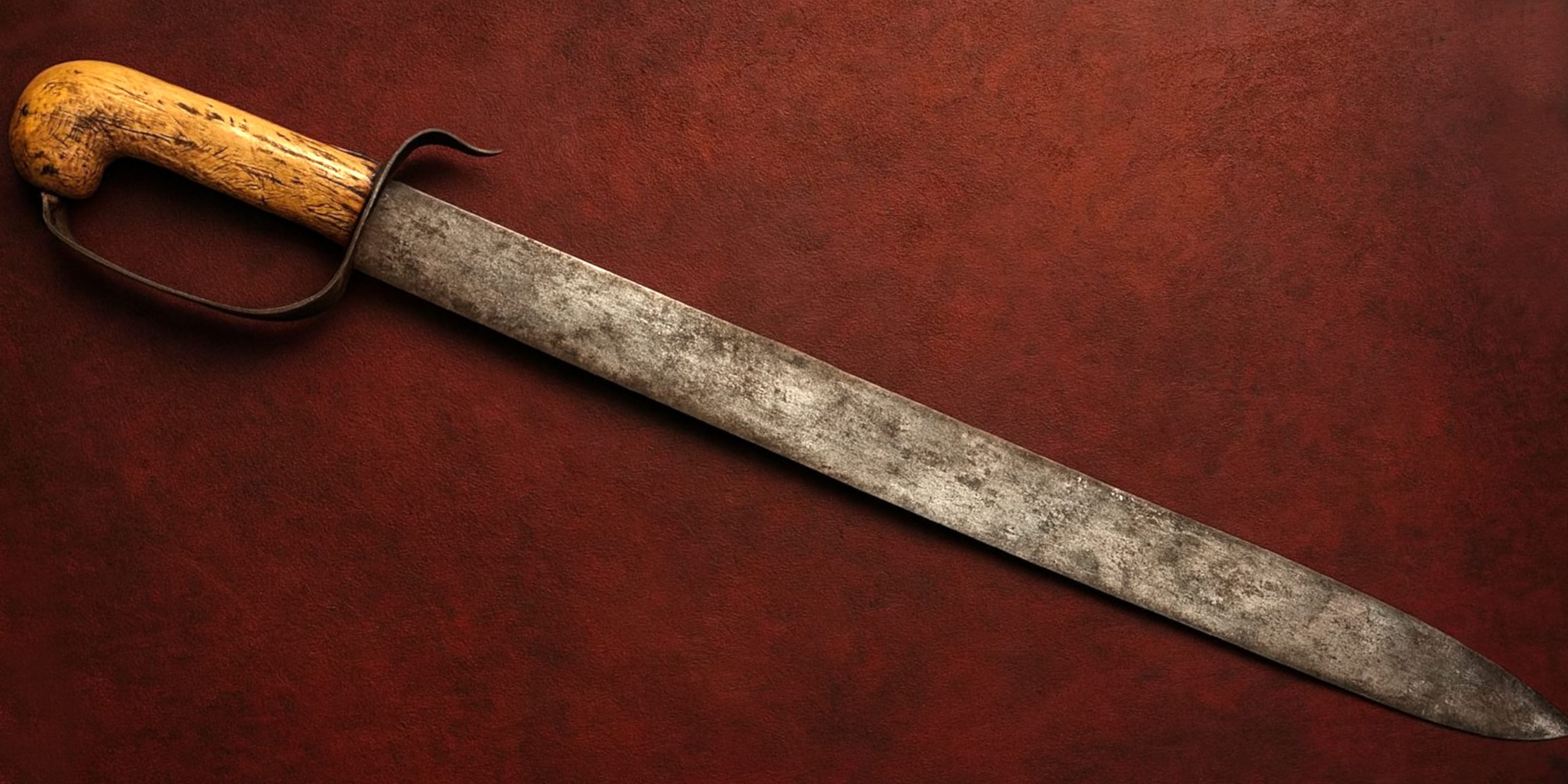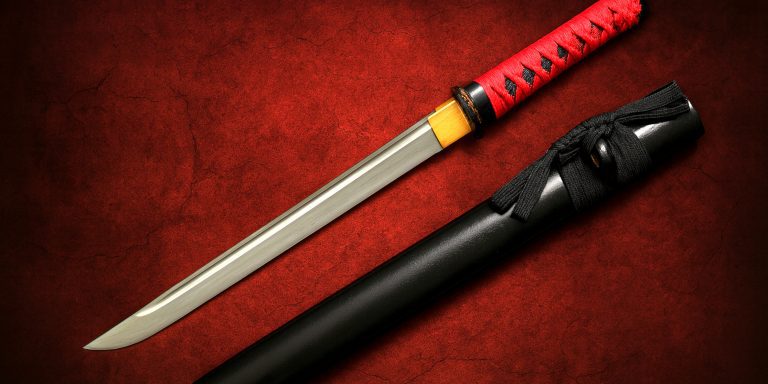
The Spanish colonial naval cutlass served as a tough and dependable weapon across the Atlantic world. Sailors used it for everything from cutting rope to controlling hostile situations in cramped deck spaces. Its form changed over time but always remained practical, built for life at sea rather than ceremony.
Specification
| Feature | Typical Specification |
|---|---|
| Blade Length | 55 cm to 65 cm |
| Blade Type | Single edged, slightly curved |
| Blade Width | 3 cm to 4 cm |
| Hilt Style | Brass or iron cup guard or half basket |
| Grip | Wood or leather wrapped |
| Overall Length | Around 75 cm |
| Weight | 0.9 kg to 1.3 kg |
| Scabbard | Leather with brass or iron fittings |
History And Evolution
Spanish naval forces relied on sturdy short swords from the early colonial period. The cutlass had to perform well in cramped ship interiors and during sudden fighting on heaving decks. Early examples took influence from Iberian cup hilts, then adapted to the needs of sailors who spent months at sea.
Colonial armouries across the Caribbean and the Philippines produced their own versions during the eighteenth century. Materials varied, which created the wide range of surviving examples today. By the nineteenth century Spain shifted toward more uniform naval patterns, although older colonial cutlasses often stayed in service due to their durability.
Advantages And Disadvantages
| Advantages | Disadvantages |
|---|---|
| Durable in harsh maritime conditions | Short reach limits versatility |
| Broad blade ideal for cutting tasks | Heavier than many later naval types |
| Good guard protection in tight spaces | Colonial manufacture varies in finish |
| Easy maintenance | Limited thrusting performance |
Comparison With Similar Weapons
| Weapon | Key Differences |
|---|---|
| British 1804 Naval Cutlass | Straighter blade with more uniform manufacture |
| French An XIII Cutlass | Lighter with a more refined hilt |
| Portuguese Naval Cutlass | Narrower blade but similar guard design |
| American Civil War Cutlass | Full brass basket, industrial uniformity |
Legacy
The Spanish colonial naval cutlass is valued today as a real working weapon from a global maritime empire. It appears in inventories from galleons, coastal forts, and colonial arsenals. Its plain and sturdy build tells a straightforward story of long voyages, constant labour, and sudden conflict.
Where To See Them
| Museum Or Collection | Location | Notes |
|---|---|---|
| Naval Museum Of Madrid | Spain | Major Spanish naval arms collection |
| Museo Del Ejército | Toledo, Spain | Early naval and colonial blades |
| Museo De Las Américas | Puerto Rico | Caribbean colonial weapons |
| National Museum Of The Philippines | Manila | Weapons linked to the Manila galleon trade |
| Private Maritime Collections | Various | Seen in specialist sales |
Collector’s Guide And Auction Price
Collectors look for intact guards, original hilts, and blades that retain their profile. Slight irregularities are expected because many colonial cutlasses were crafted in local workshops.
Key features to look for:
• Secure and original guard fittings
• Correct period blade and hilt pairing
• Leather scabbards with proper fittings
• Provenance tied to colonial service
Auction ranges:
| Condition | Notes | Price Range |
|---|---|---|
| Excellent | Strong provenance, clean blade | 800 to 1500 GBP |
| Good | Light wear, sound structure | 400 to 750 GBP |
| Fair | Patina, repairs, incomplete scabbard | 200 to 350 GBP |
| Poor | Missing parts or heavy damage | Under 150 GBP |
Well documented examples from recognised arsenals sometimes exceed 1500 GBP in maritime auctions.



